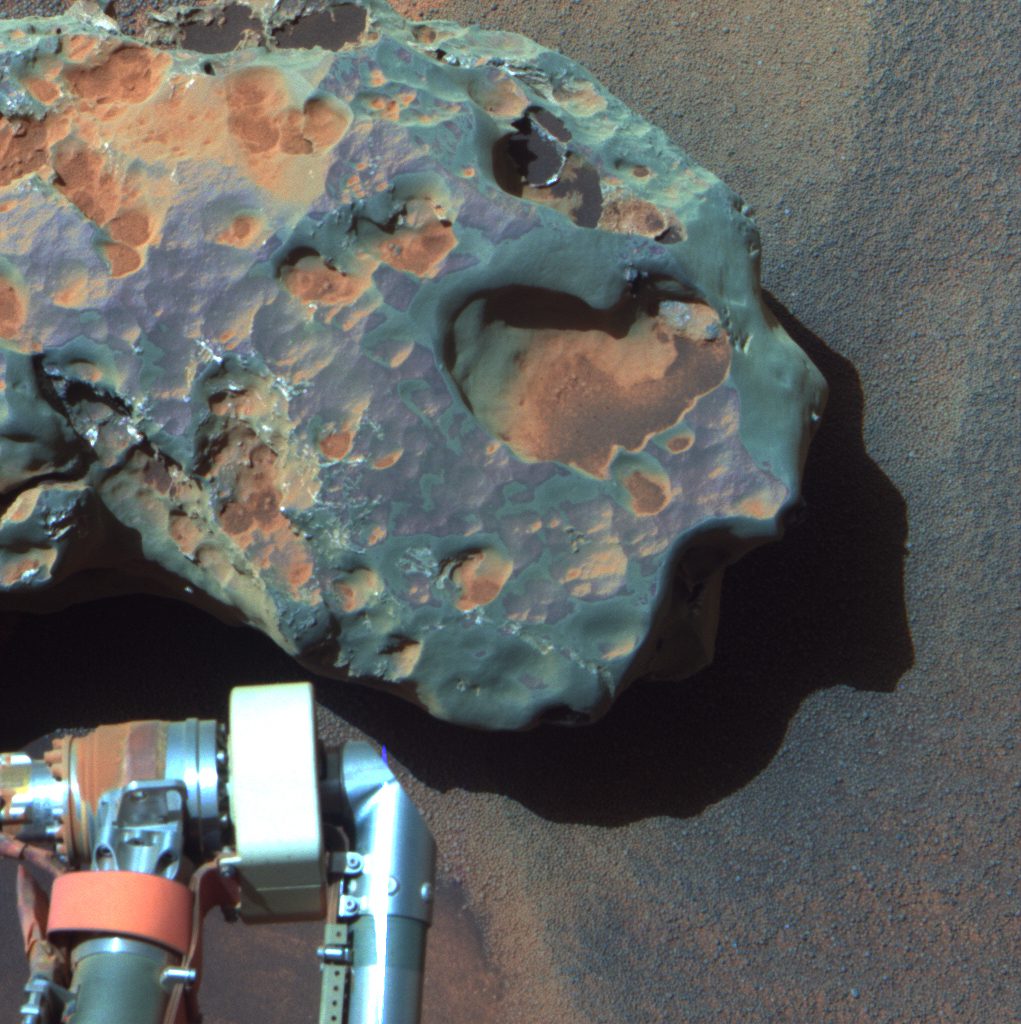If you’ve discovered an unusual rock you think might be a meteorite but aren’t sure where to start, try your hand at some of these identification methods. Meteorites are fragments of rock from a meteoroid, asteroid, or even a comet that passes through a planet’s atmosphere, ending up on the surface.
There are three main types of meteorites; iron meteorites, stony-iron meteorites, and stony meteorites. Each type can have subgroups and are classified based on mineral content, structure, and chemical makeup.
While certain types of meteorites such as chondrites can be over 4.5 billion years old and extremely rare, more common types such as iron meteorites do crop up fairly often. Meteorites have several tell-tale signs to help prove that they’ve come from outer space and are not just old pieces of your garden walls. Here, we break down the meteorites and meteor-wrongs of identifying a sample.
One check is for density. Meteorites contain metallic iron and other dense materials, meaning they will be a lot heavier for their size than your typical garden rock.
All that metallic iron means meteorites are often magnetic, so a magnet can often be attracted to the meteorite. This isn’t a hard and fast rule, however – some super rare types of meteorites are not magnetic, but it’s a good place to start for the more common varieties.
Unlikely the average Earth-born rock, meteorites are all sorts of funky shapes, having been melted on their way through Earth’s atmosphere. They may even possess unusual pits in their surface called regmaglypts, also called “thumbprints” because of their resemblance to the fingerprints a potter would make in wet clay. These are formed as the meteorite’s outer layer melts away on the journey to Earth’s surface.

Regmaglypts on a meteorite nicknamed “Oileán Ruaidh” on Mars. Image taken by the rover Opportunity. Image Credit: NASA/JPL/Public Domain
This melting process can even result in a stony crust around the surface of the meteorite called a fusion crust, described as a black eggshell-like outer crust around the rock. Is the rock a shiny black? If you’ve happened across a fresh meteorite, the surface may well be shiny due to the effect of traveling through the Earth’s atmosphere at high speed. If your sample is older it may be more of a rusty brown as the iron content in the meteorite begins to rust.
Flow lines are very thin lines caused by the melting of the meteorite as it enters Earth’s atmosphere, patterns that can be minute and thinner than a human hair. These might take a practiced eye to find, but can be an intriguing characteristic of meteorites.
As well as testing for magnetism, the scratch test can also be performed on your would-be space rock. After scratching the rock along an unglazed ceramic surface, there should be no streaks left behind. Rocks that leave a black or red streak likely contain magnetite or hematite, which are not usually found in meteorites. Bear in mind that other rock types can also not leave streaks, so while this is a good test to rule out some rock types, it is far from conclusive.
If you have the means (and the safety specs), create a hole in your sample and see if you can spot any shiny metallic flakes. This can be a giveaway that your sample has come from outer space. Or you could be looking at echidna poop.
While some of these features might be hard to test for, it might be easier to eliminate some features affectionately known as meteor-wrongs instead.
Meteorites don’t contain crystals like quartz which, though commonly found and even valuable in some cases, didn’t come from space. Instead, most quartz is formed from cooling magma.
Volcanic rocks sometimes contain bubbles from this cooling process, but meteorites are unlikely to have bubbles within them. In a similar vein, meteorites don’t usually contain vesicles, which are the pin-prick holes usually seen in volcanic rocks like pumice.
Lab-based tests are one way to get a more definite answer to your meteorite dilemma. Human-made iron from smelting processes, known as slag, is sometimes mistaken for meteorites, but definitive proof can be gained by testing for the presence of nickel. Earth-side iron usually does not contain nickel, whereas meteoritic iron from space contains at least some elemental nickel.
Even if your space sample passes all these tests and is a proven bona fide out-of-this-world rock, do you get to keep it? Well in the US, if you happen to find one on land you own, it’s yours to keep – but if you find the space survivor on public land or in National Parks, it belongs to the United States Government or the Smithsonian Institute.
Just don’t send your findings to NASA, they aren’t interested.
Source Link: How To Tell If That Rock You Found Is Actually A Meteorite (And If You Can Keep It)